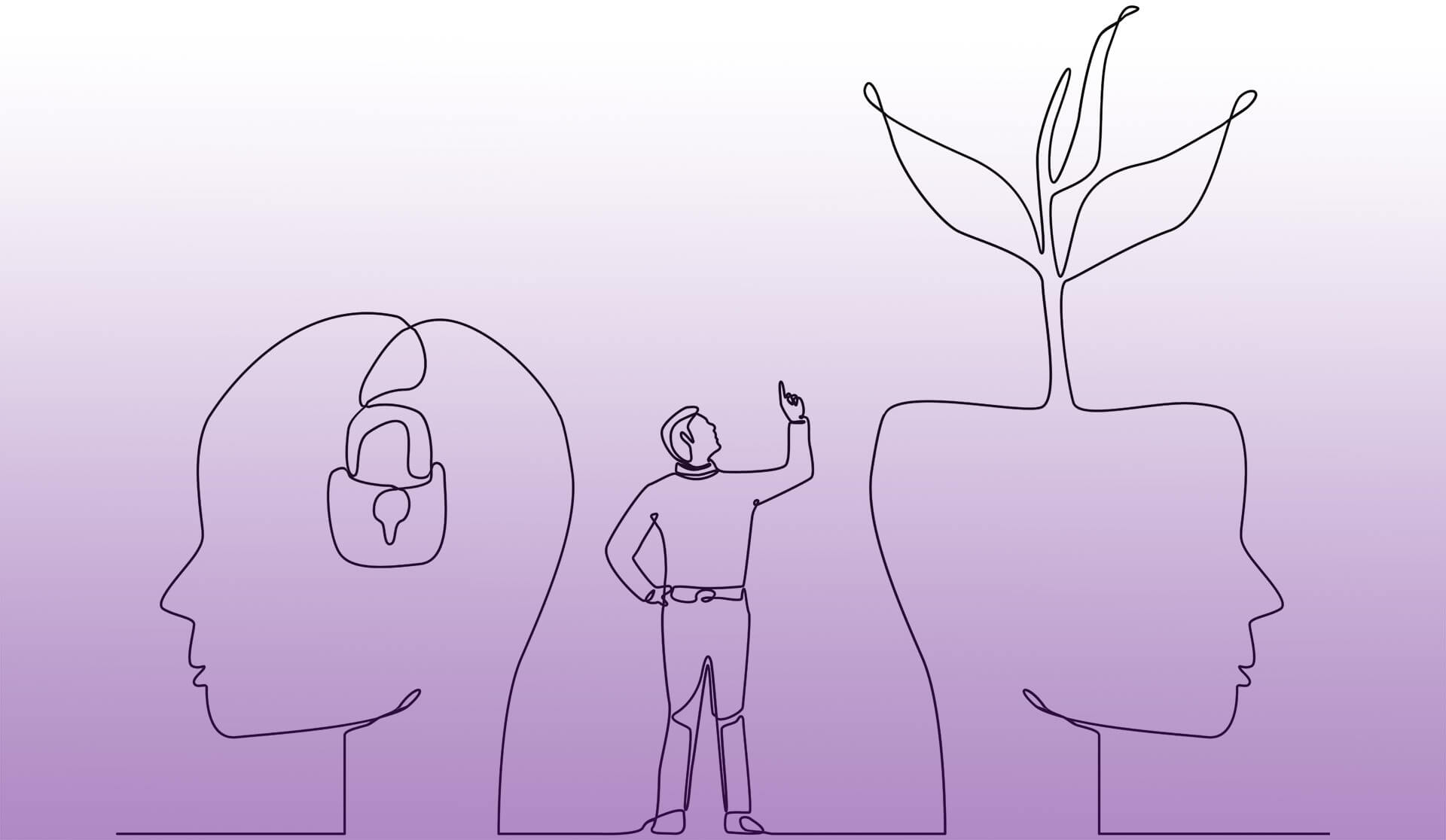Growth mindset: a key strategic agility enabler
A growth mindset is a must-have attribute for successful leaders and businesses. It’s also a key capability fundamental to developing strategic agility.
To recap, strategic agility is a core attribute of high-performing teams. It gives them the ability to look ahead, anticipate potential issues and create competitive strategies. There are many capabilities that contribute to strategic agility, and this is the second article in my series about strategic agility. I’ll explain why a growth mindset is important and how to develop yours.
Having a growth mindset means thriving on challenges and being open to new things. Dozens of studies have shown that companies with a growth mindset culture have high levels of trust, innovation, collaboration, learning and growth. This culture builds momentum, creating more efficient and effective teams, especially when you need to move at pace. It also improves business continuity because key leaders are empowered to make decisions and carry out their roles.
On the flipside, a fixed mindset means we can’t change our abilities in a meaningful way. Leaders with a fixed mindset are convinced of their own strengths and weaknesses, avoid challenges and dismiss feedback. Think of how that could affect an entire team. This culture risks creating an echo chamber which amplifies attitudes and beliefs that go unquestioned and if different or competing views are under-represented. And there’s a high risk of group think, which creates pressure to agree with the perceived consensus and endorse poor decisions. At its worst, a fixed mindset can create a toxic culture and an environment in which toxic behaviour can thrive.

Choose your path
Microsoft experienced significant cultural and commercial growth after Satya Nadella became CEO in 2014. He credits the introduction of a growth mindset culture as critical to turning the company around.
Remember Blackberry? Its stubborn attachment to the physical QWERTY keyboard over the touchscreens of smart phones – driven by the iPhone – caused one of the most dramatic business failures in history. Its leadership refused to accept its customers would change. That’s a fixed mindset.
So how can you form and foster a growth mindset for yourself and in your team?
Invest the time to work with your team leaders to define your values and how you’ll work together. Consider including some ‘rules of engagement’ and commitments that will create a platform of mutual trust and accountability.
Encourage participation and share your opinion last. One way to do this is to ask more questions and make fewer statements. Don’t be afraid to follow a question with another question. Great follow-up responses include ‘how could we do this?’ or ‘Tell me more..’. This can keep the discussion alive and help you break through an initial negative reaction.
Create space for respectful debate, either formally or informally. You could add this to the agenda of an existing regular meeting or schedule a dedicated session. I once worked for a leader who held a weekly meeting he called ‘What dumb things are we doing to our customers?’. This was a safe forum that regularly launched great initiatives to improve our customers’ lives.
Encourage innovation and reward new ideas. Hackathons are just one example of a great way to do this.
Learn to recognise resistance and inertia and develop strategies to break through it. There is always a solution. If your team is really blocked, hold a workshop to solve the problem. Ask yourself ‘but what if we could’ instead of ‘but we can’t do that’.
Be responsive, not reactive, especially when a mistake is made. How you respond and behave when you make mistakes has a significant impact on your team’s culture. It can build trust, too. David Thodey was a great inspiration and role model in this regard. I personally saw him step up more than once to admit he’d made decisions that didn’t work. He owned it, changed it, and communicated why.
Moving towards growth
It is possible to move from a fixed mindset to one of growth. Here are some approaches I’ve used or observed that have successfully moved teams and individuals towards a growth mindset and improved their performance.
Try not to be the smartest person in the room.
Resist the temptation to always be the person who creates the solution. Allow your team to collaborate its way out of a problem and provide guidance if required to keep the team on track.
Be aware of your own thinking patterns and language. Is it open (“what must I believe to make it happen”) or closed (“we tried that before…”)?
Ask a few trusted advisors to observe you and provide constructive help if you’re more fixed than growth oriented.
Do something different if you’re stuck. Change your environment, exercise or do something creative. I have a mental box I call the “AFL” box – Awaiting Further Light. If I’m stuck on something, I put it in the AFL box and let my subconscious go to work on it while I do something else. I trust my subconscious to come up with something eventually.
Cultivate professional relationships with people who are different and challenge your thinking. Read articles on a broad range of topics or subscribe to different podcasts. Stay edgy and remember there’s always something new to learn.
Be patient and kind to yourself. And remember … there is always a solution.
You and your team are far more likely to become high performers with a growth mindset. You’ll be open to new opportunities and well on your way to achieving strategic agility.
Let’s talk about how I can help your team develop a growth mindset.
FURTHER READING:
Definition & resources: Growth Mindset Institute
Article: A growth versus fixed mindset often means the difference between success and failure







